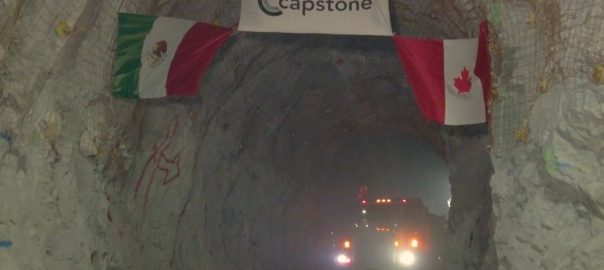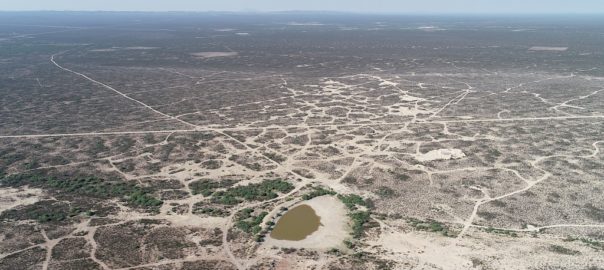An updated Technical Report on Capstone Mining’s Cozamin copper-silver mine in Zacatecas, Mexico, has shown the potential for a mine life extension to 2031, and a plan for dry-stack tailings and underground paste backfill. At the same time, the company says it is studying the use of “innovative mining techniques and enhanced pillar recovery” to make the most of existing reserves and resources.
The updated life of mine plan released outlined average annual copper production of 51.2 MIb (23,224 t) of copper and 1.6 Moz of silver production over 10 years at average C1 costs, including the 50% silver stream, of $1.02/Ib of payable copper. From 2021 to 2027, average annual production is slated to be 58.8 MIb of copper and 1.7 Moz of silver.
The company said a planned ramp-up to 3,780 t/d, or 1.38 Mt/y, by the end of March quarter is on track, with a new section of ramp to open the one-way traffic circuit to debottleneck the mine (pictured) completed in early December 2020, ahead of schedule.
Reserves increased by 39% and now stand at 14.1 Mt, relative to April 30, 2020. Contained copper and silver increased by 37% and 49%, respectively, with around half of this increase due to recovery of high-grade pillars using paste backfill, Capstone said.
The miner said “tailings management transformation” activities were progressing on schedule at site, including feasibility-level design and studies in support of permitting a filtered (dry stack) tailings storage facility.
“This conversion from a slurry tailings impoundment aligns with industry leading socio-environmental best practice for tailings management,” the company said.
Meanwhile, a prefeasibility study (PFS) for an underground paste backfill system was completed in December.
The study indicates a paste backfill system will allow ore extraction containing over 100 MIb of copper and 3.1 Moz of silver between 2023 and 2031, which would have otherwise been left as unmined pillars. The PFS design has a capital cost estimate ranging from $41-$45 million and an increase in operating costs of around $7.50/t of ore mined. Capstone says its management has approved the paste backfill project and work has commenced on procurement of long lead items.
The proposed paste backfill system includes a tailings filter plant, a paste mixing plant, twin boreholes to deliver paste underground and an underground distribution system. The system is expected to be commissioned starting in the December quarter of 2022, with ramp-up completed in the March quarter of 2023.
PFS design of these facilities was completed by Paterson & Cooke in December 2020 and a feasibility study is underway with completion expected in April 2021. Mine planning was completed by Cozamin, with design support provided by a geotechnical consultant, and paste backfill operational guidance provided by AMC Consultants.
Within the latest release, Capstone also flagged the initiation of its “Impact23 Growth” project, which has identified areas of exploration excellence, innovative mining techniques and enhanced pillar recovery at Cozamin.
“By 2023, the goal is to further extend mine life, increase environmental and safety standards, and improve operational efficiencies at Cozamin, utilising mineral resources already discovered in addition to testing new targets,” the company explained.
Included among the options are the innovative mining techniques for resource to reserve conversion flagged at the start of this story.
Capstone says a study will be initiated this year to assess alternative mining techniques with the objective of lowering costs and dilution to convert resources to reserves from the indicated resource base. The current mining methods are longitudinal longhole open stoping and AVOCA, with possible alternatives to be studied including cut-and-fill, drift-and-fill and longhole open stoping with ore sorting technology.
Brad Mercer, Capstone’s SVP and Chief Operating Officer, said: “The life of mine plan announced today maximises extraction of the orebody’s high-grade core by deferring stoping in this area until the paste backfill plant is in operation in 2023. Projected production averages nearly 60 MIb of copper per year for seven years at first quartile costs.
“The Impact23 Growth project that we are kickstarting today is aiming to demonstrate in a 2023 technical report how Cozamin can sustain these levels of performance well into the 2030s.”
Darren Pylot, Capstone’s President and CEO, added: “After 14 years in operation, the best years of Cozamin are ahead. The mine is world class with sustainable low costs and leading safety and environmental performance entrenched throughout the organisation. The growth initiatives are supported by an entrepreneurial fabric at Capstone, as we embrace innovation and technology to create high impact value for our shareholders.”








